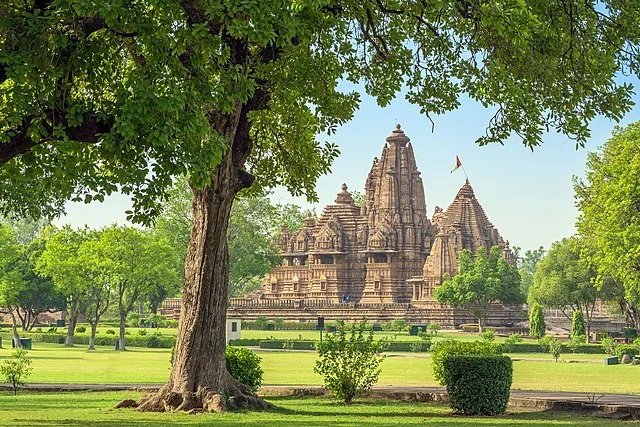The Lakshmana Temple in Khajuraho, India, stands as a remarkable monument of early medieval Indian architecture and art. Built during the 10th century AD by Yashovarman, a Chandela dynasty ruler, the temple serves as a significant representation of Hindu temple architecture and iconography. Its detailed stone carvings, intricate layouts, and symbolic elements make it a masterpiece within the Khajuraho Group of Monuments, a UNESCO World Heritage Site since 1986.
Get your dose of History via Email
Historical Background
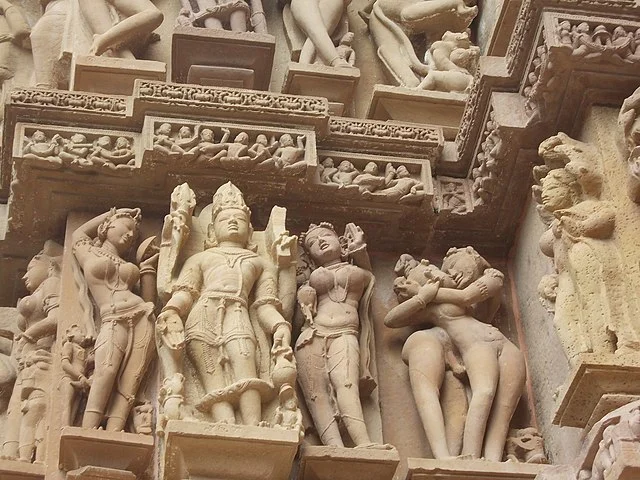
Yashovarman commissioned the Lakshmana Temple in the early 900s AD to honor Lord Vishnu. It was among the first and most prominent temples constructed by the Chandela dynasty. According to historical accounts, the Chandelas ruled over the Bundelkhand region, which is now part of central India. They established a tradition of temple building that would continue for over two centuries, leaving behind an impressive collection of temples that highlight Hindu, Jain, and Tantric deities.
Dedicated to Vaikuntha Vishnu, a form of Vishnu believed to reside in the celestial realm, the temple reflects the religious values of its patrons. It also serves as a testimony to the socio-political stability of the Chandela dynasty during its early years, as the temple required significant resources, skilled artisans, and a thriving economy to build.
Architectural Layout
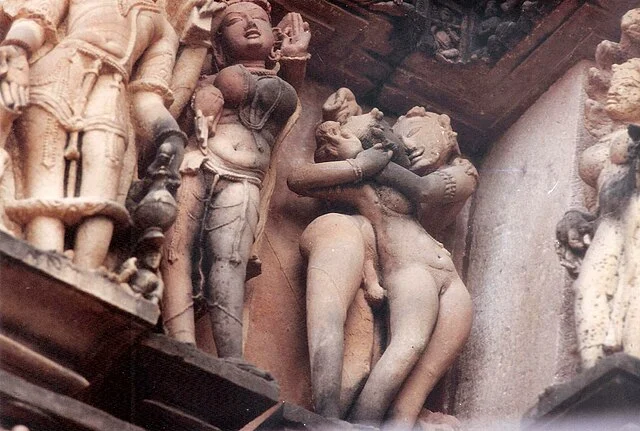
The Lakshmana Temple exemplifies the Nagara style of temple architecture, distinguished by its beehive-like shikhara (spire) and highly ornate exteriors. The temple is set on a high plinth, accessible by a flight of steps leading up to its main entrance. Its layout consists of a series of interconnected chambers: the ardha-mandapa (entrance porch), mandapa (assembly hall), maha-mandapa (great hall), and garbha-griha (sanctum sanctorum), where the main deity resides.
Each element of the temple’s structure serves a purpose. The mandapa allows congregational gathering, while the garbha-griha provides a secluded, sanctified space for worship. Above the sanctum sanctorum rises the shikhara, symbolizing Mount Meru, the mythical center of the universe in Hindu cosmology.
Iconography and Sculptures
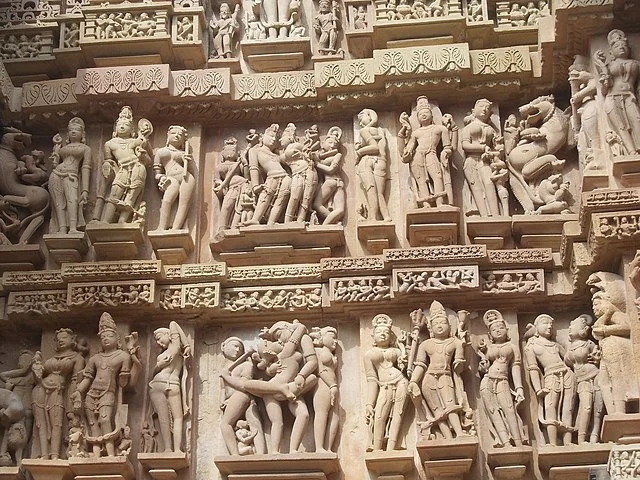
The temple’s exterior walls are adorned with an elaborate array of sculptures that illustrate scenes from Hindu mythology, daily life, and symbolic depictions of the divine. These carvings range from images of gods and goddesses to mythical creatures and erotic scenes, reflecting the diverse themes common in early medieval Hindu temples.
Prominent panels depict Vishnu, Shiva, and other deities, conveying the temple’s primary focus on worship and devotion. The inclusion of erotic sculptures, often misinterpreted by modern viewers, symbolizes fertility, life energy, and spiritual unity in Hindu philosophy. The artists meticulously carved these figures, each with detailed expressions and dynamic poses, showcasing the skill and aesthetic sophistication of the period.
Symbolic Significance
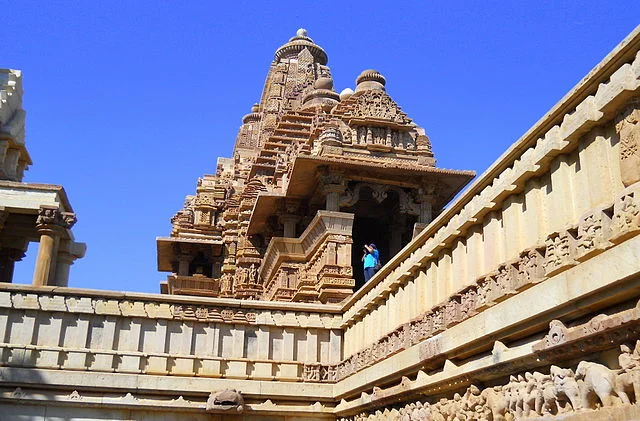
The Lakshmana Temple’s architectural design follows a symbolic plan grounded in Hindu cosmology and philosophy. The temple’s upward progression from its base to its towering shikhara represents the soul’s journey toward enlightenment. The different chambers lead devotees closer to the inner sanctum, symbolizing a gradual purification and preparation for encountering the divine.
The temple’s erotic sculptures, integrated into this journey, may reflect the belief in kama (sensual desire) as one of the four essential aims of human life, alongside dharma (duty), artha (prosperity), and moksha (spiritual liberation). Thus, the Lakshmana Temple’s design promotes a holistic view of human existence.
Restoration and Preservation
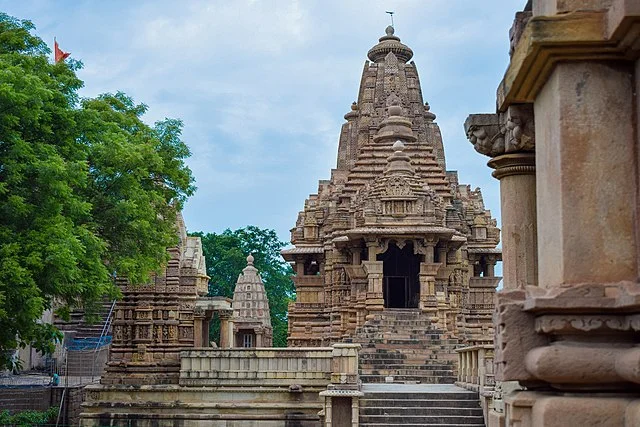
In the late 19th century, British officials documented the Khajuraho temples, sparking international awareness of these ancient structures. The Archaeological Survey of India (ASI) later took charge of their preservation, initiating restoration projects to stabilize the Lakshmana Temple and its neighboring structures. Conservation efforts have focused on preventing further erosion, strengthening the temple’s foundation, and ensuring its structural integrity.
Conclusion
The Lakshmana Temple in Khajuraho stands as a testament to the architectural, artistic, and spiritual achievements of the Chandela dynasty in the 10th century AD. Through its meticulous design, intricate iconography, and symbolic layout, the temple not only serves as a place of worship but also reflects the philosophical and cultural values of medieval Hindu society. The temple’s preservation allows scholars, historians, and visitors to witness the enduring legacy of India’s medieval past, offering insight into the artistry and beliefs that shaped its civilization.
Source:

